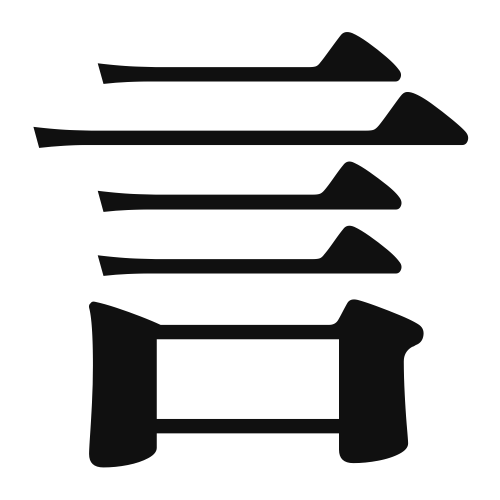1. Overview of Meaning
The kanji 言 (pronounced “gen” or “gon”) means “word” or “to speak.” It represents the concept of communication and expression through language.
2. Formation and Radical
The kanji 言 is classified as a pictogram, originally depicting a person speaking. It is also a radical in other kanji, often related to speech or language.
The radical for 言 is also 言, which signifies its connection to words and communication.
3. Examples of Usage
Common words and phrases that include 言 are:
- 言葉 (kotoba) – “word” or “language”
- 言う (iu) – “to say” or “to tell”
- 言論 (genron) – “speech” or “public discourse”
Example sentence in daily conversation:
彼は大切なことを言った。 (Kare wa taisetsu na koto o itta.) – “He said something important.”
4. Synonyms and Antonyms
Similar kanji with related meanings include:
- 語 (go) – “language” or “word,” which often refers to a specific language or dialect.
- 話 (hanashi) – “talk” or “story,” which emphasizes the act of speaking or narrating.
Antonyms include:
- 黙 (daku) – “to be silent,” which represents the absence of speech.
5. Cultural and Historical Background
The kanji 言 is deeply rooted in Japanese culture, reflecting the importance of communication in social interactions. It appears in various proverbs and idiomatic expressions, such as:
- 言わぬが花 (Iwanu ga hana) – “Silence is golden,” suggesting that sometimes it’s better not to speak.
- 言葉にする (Kotoba ni suru) – “To put into words,” meaning to express thoughts or feelings verbally.
Overall, 言 encapsulates the essence of language and communication in Japanese culture.
